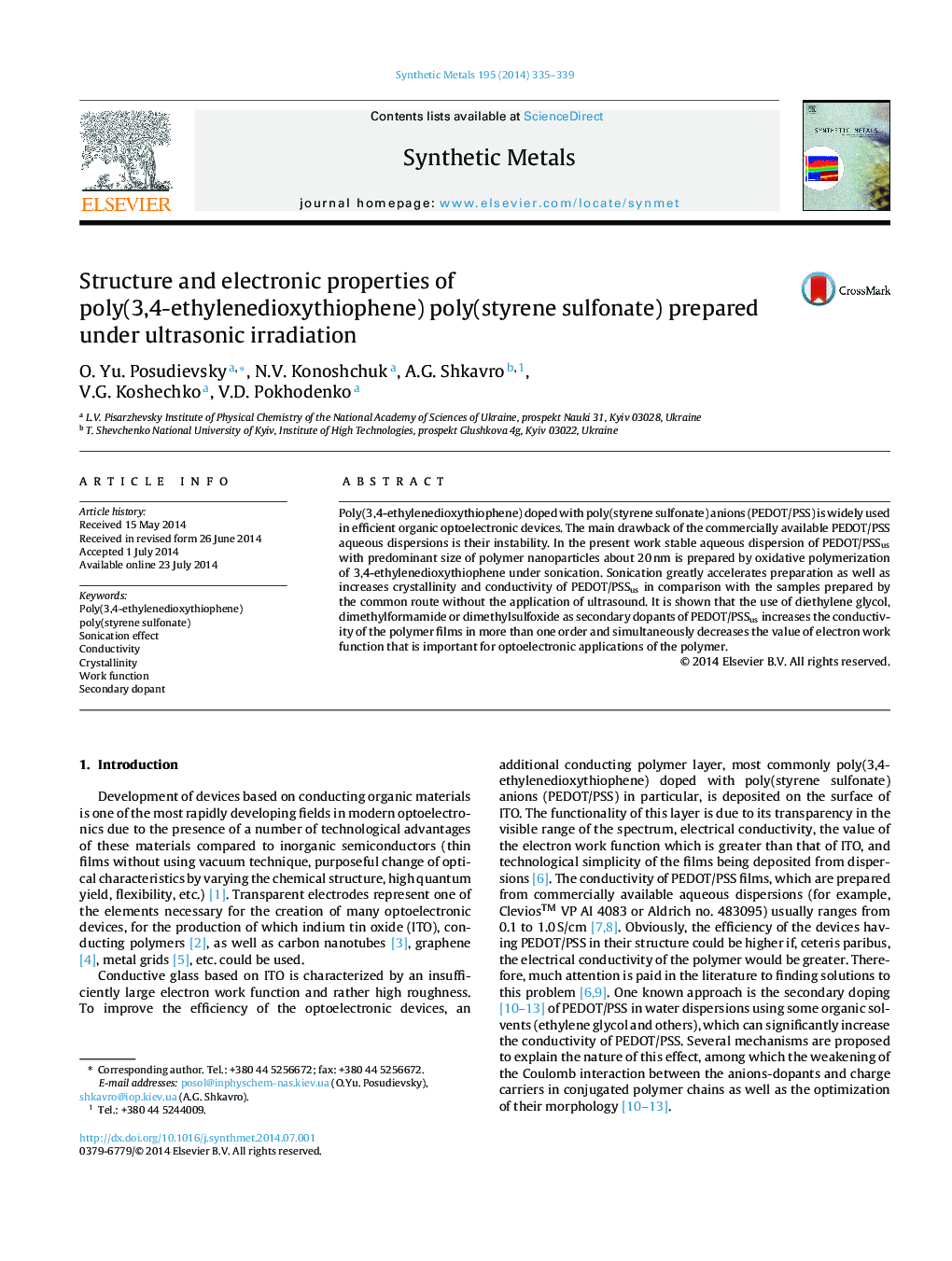| Article ID | Journal | Published Year | Pages | File Type |
|---|---|---|---|---|
| 1440963 | Synthetic Metals | 2014 | 5 Pages |
•Sonication greatly accelerates preparation of PEDOT/PSS by oxidative polymerization.•PEDOT/PSSus is characterized by increased crystallinity and conductivity.•Secondary doping increases the conductivity of PEDOT/PSSus in more than one order.•The work function of PEDOT/PSSus decreases with the use of secondary dopants.
Poly(3,4-ethylenedioxythiophene) doped with poly(styrene sulfonate) anions (PEDOT/PSS) is widely used in efficient organic optoelectronic devices. The main drawback of the commercially available PEDOT/PSS aqueous dispersions is their instability. In the present work stable aqueous dispersion of PEDOT/PSSus with predominant size of polymer nanoparticles about 20 nm is prepared by oxidative polymerization of 3,4-ethylenedioxythiophene under sonication. Sonication greatly accelerates preparation as well as increases crystallinity and conductivity of PEDOT/PSSus in comparison with the samples prepared by the common route without the application of ultrasound. It is shown that the use of diethylene glycol, dimethylformamide or dimethylsulfoxide as secondary dopants of PEDOT/PSSus increases the conductivity of the polymer films in more than one order and simultaneously decreases the value of electron work function that is important for optoelectronic applications of the polymer.
Graphical abstractSonication accelerates preparation of poly(3,4-ethylenedioxythiophene) poly(styrene sulfonate) with increased crystallinity and conductivity and work function, which decreases with the use of secondary dopants.Figure optionsDownload full-size imageDownload as PowerPoint slide
